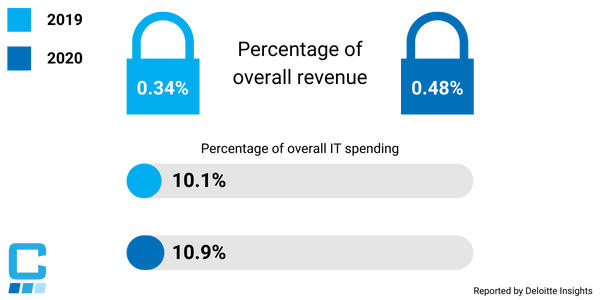Global spending on cybersecurity products and services has been increasing for years, to the point where it has become a $124 billion global industry. Moreover, many IT security leaders expect their budgets to increase even further in the coming years, as cyberthreats continue to advance and new technologies present new risks and opportunities alike.
The traditional approach to cybersecurity budgeting is to focus on immediate needs and past experiences. However, given the constantly changing nature of cyberthreats and technology, this approach can lead to large and unpredictable expenses later on. Instead, you should take a risk-based approach that constantly adapts to your evolving business needs.
How to Budget IT Costs Correctly
Every cybersecurity strategy should incorporate the optimal blend of technology and process. Tools and automation can only take you so far. You also need to think about security training, policy development, risk assessments, and auditing - among other things. As for tools, you may need endpoint protection, network-level protection, security for mobile devices, backup and disaster recovery systems, and patch management, to name a few.
The list of must-have security tools and processes might seem overwhelming and leave you worried about being unable to meet the potential cost demands. Fortunately, there are many integrated cybersecurity platforms on the market that can help you avoid the hassle of having to manage lots of different vendors and software products. Remember, reducing complexity is a top priority both for improving security and IT budget management.
How Much Should You Expect to Spend?
No two organizations look the same when it comes to evaluating security needs and justifying spend. The optimal budget depends on many factors, such as the sensitivity of the information your company handles, the systems and processes you have, and any regulations pertaining to your industry sector. For example, a Deloitte study in 2020 found that Financial firms spent 10.1% of their IT budget on cybersecurity. In 2020, that percent raised to 10.9% of the IT budget spent on
Why Do You Need a Documented Security Strategy?
A documented security strategy establishes an organization-wide set of controls and priorities to standardize your security strategy and, in doing so, provide greater visibility into the budget. A documented strategy also helps you achieve alignment between cybersecurity and business goals by bringing together people, processes, and technology.
Your business security strategy isn’t something you write once and then put in a filing cabinet. It’s a dynamic document that’s regularly updated to align with changes in your business goals and environment. It’s also a vital reference when establishing and updating your cybersecurity budget, since it includes the list of controls, processes, and tools required to meet your security goals.
Can You Reduce Security Costs Without Adding Risk?
Cyberthreats are becoming increasingly widespread and more sophisticated, hence it hardly seems like a good time to think about reducing costs. Nonetheless, no smaller organization can be expected to implement the same level of security as that of a large global enterprise, at least not if they’re trying to do so alone. Yet, every business is a potential target, no matter its size or industry. As such, every organization needs the highest possible level of protection, especially if it deals with sensitive information pertaining to finance, healthcare, or defense.
Fortunately, there are many IT security tools available to businesses that give them opportunities to offload risk. By simply partnering with a managed security services provider (MSSP) and taking advantage of shared responsibility models with cloud providers, a business can greatly minimize security risks. Outsourcing security operations is great for IT budget management too, since services are provided for a fixed monthly fee. This ensures complete transparency and control over costs, while also reducing the need to budget for unforeseen incidents.
Cybersecurity as an Investment in Innovation
Most business leaders view cybersecurity as a cost center. They know they need IT security tools, but they might view it as a necessary evil. Unfortunately, this thinking stifles innovation and fails to promote an organization-wide culture of security by design and default. Instead, leaders must start to view cybersecurity as an investment in company growth. Your budget should consider the value that stronger cybersecurity controls and processes can bring to your organization by enabling growth and innovation without increasing risk.
Charles IT brings years of expertise and proven managed security solutions to help you bolster your company’s defenses against cyberthreats. Contact us today to schedule a consultation!
*This blog was originally published on November 4th, 2020 and has been edited for accuracy.





